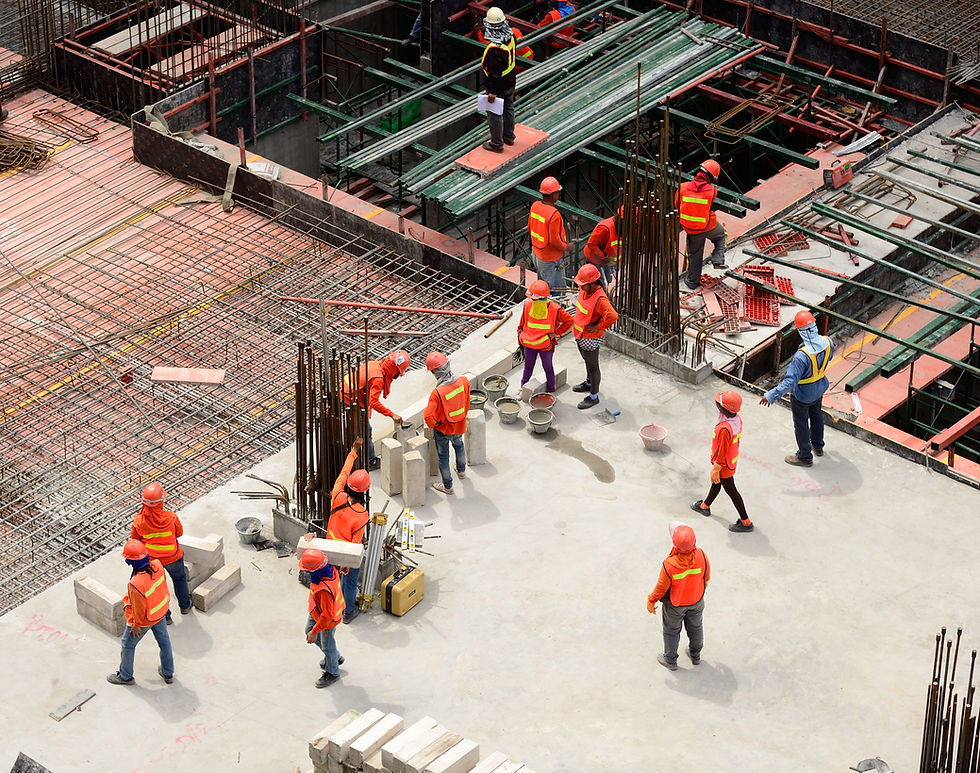The Importance of Non-Destructive Testing in Modern Construction
- sudarshan bire
- Dec 15, 2024
- 2 min read

Non-Destructive Testing (NDT) has become a cornerstone of modern construction practices, offering innovative solutions to ensure the safety, durability, and performance of structures. By evaluating materials and components without causing damage, NDT plays a critical role in maintaining the integrity of buildings, bridges, and infrastructure in a cost-effective and reliable manner. Here’s why NDT is essential in today’s construction industry.
1. Ensuring Structural Safety
Safety is paramount in construction, and NDT provides accurate insights into the condition of materials and structures. Techniques like Ultrasonic Pulse Velocity Testing, Rebound Hammer Testing, and Rebar Mapping detect internal defects, cracks, and inconsistencies in concrete and steel, helping prevent structural failures.
2. Cost-Effective Maintenance
NDT allows early detection of potential issues, minimizing repair costs and extending the lifespan of structures. Unlike traditional testing methods, which may involve destructive sampling, NDT preserves the structure while delivering precise results, saving both time and resources.
3. Compliance with Industry Standards
Construction projects must adhere to stringent safety and quality standards. NDT methods, such as Half-Cell Potential Testing and Magnetic Particle Testing, ensure compliance by providing detailed assessments of corrosion, material strength, and weld integrity.
4. Application in Diverse Materials
Modern construction involves a variety of materials, from concrete and steel to composites. NDT techniques like Ultrasonic Thickness Testing and Dye Penetration Testing are versatile, enabling thorough analysis across different materials and applications.
5. Supporting Sustainable Construction
NDT contributes to sustainability by reducing waste and promoting efficient use of materials. For instance, tests like Core Cutting & Compression Testing provide valuable data for optimizing material selection and ensuring durability, leading to eco-friendly construction practices.
6. Critical for Retrofitting and Repairs
In retrofitting and repair projects, NDT methods like Chemical Testing (pH, Chloride & Sulphate) and Carbon Fiber Wrap Evaluations help assess the current condition of structures and determine the most effective strengthening solutions.
7. Advanced Monitoring Capabilities
Technologies such as vibration testing and bridge load tests provide real-time monitoring, ensuring that structures perform well under operational and environmental stresses. These advanced capabilities make NDT indispensable for infrastructure projects.

Popular Non-Destructive Testing Methods Used Today
Ultrasonic Pulse Velocity Test: Evaluates the quality of concrete and detects voids or cracks.
Rebar Mapping: Identifies the position and density of reinforcement in concrete.
Half-Cell Potential Test: Assesses the likelihood of steel corrosion in reinforced concrete.
Dye Penetration Test: Detects surface flaws in metals.
Magnetic Particle Test: Finds surface and subsurface defects in ferromagnetic materials.
Conclusion

In the ever-evolving construction industry, Non-Destructive Testing is a vital tool for ensuring safety, sustainability, and efficiency. By leveraging advanced techniques to evaluate structures without damage, NDT empowers engineers and architects to make informed decisions, reduce risks, and deliver durable, high-quality projects. For modern construction professionals, integrating NDT into every stage of a project—from design to maintenance—is no longer an option but a necessity.

Commentaires